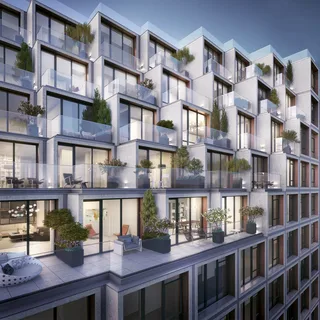Residential architecture plays a crucial role in shaping the environments we live in. From cozy urban apartments to sprawling suburban estates, the design and functionality of a home impact our daily lives, comfort, and well-being. As homeowners seek personalized, energy-efficient, and stylish living spaces, the field of residential architecture continues to evolve with trends that emphasize sustainability, smart design, and aesthetic value.
What is Residential Architecture?
Residential architecture is the branch of architecture focused on the design and construction of living spaces. It includes single-family homes, multi-family residences, duplexes, and apartment buildings. Unlike commercial or industrial architecture, residential design centers around comfort, lifestyle, and the personal needs of occupants.
An expert in residential architecture understands how to balance form and function, creating spaces that are both beautiful and practical. This includes everything from optimizing floor plans to incorporating natural light, ventilation, and eco-friendly materials.
Importance of Residential Architecture in Modern Living
As urban populations grow and lifestyles change, the demand for innovative residential architecture solutions is increasing. Thoughtful architectural design enhances quality of life by:
- Maximizing space in small urban homes
- Ensuring energy efficiency through green building techniques
- Creating flexible spaces for remote work and family life
- Using materials and styles that reflect personal and cultural identity
In today’s fast-paced world, homeowners value residences that are more than just shelters—they want homes that reflect their values, lifestyles, and future needs.
Key Elements of Modern Residential Architecture
1. Sustainability
Eco-conscious living is a top trend in residential architecture. Designers are incorporating green building materials, solar panels, rainwater harvesting systems, and high-efficiency HVAC systems to reduce environmental impact and lower energy costs.
2. Open Floor Plans
Modern homes often feature open-concept designs that create seamless transitions between kitchen, dining, and living areas. This enhances social interaction and gives the illusion of larger spaces.
3. Natural Light and Ventilation
Architects are prioritizing large windows, skylights, and cross-ventilation systems to bring in natural light and improve indoor air quality—essential factors in creating healthy living spaces.
4. Smart Home Integration
Technology is transforming residential architecture with smart home systems that control lighting, security, temperature, and appliances. Integrating these elements during the design phase leads to better performance and aesthetics.
5. Cultural and Personal Expression
Residential architecture is deeply personal. Architects work closely with clients to reflect their tastes, traditions, and values through materials, layouts, and decorative features.
Popular Residential Architecture Styles
Understanding various residential architectural styles can help homeowners choose a design that fits their personality and lifestyle. Some popular styles include:
- Modern Architecture: Characterized by clean lines, minimalism, and a focus on functionality.
- Contemporary Architecture: Often blends traditional elements with modern aesthetics and green building practices.
- Colonial Style: Known for its symmetrical design, gabled roofs, and classic proportions.
- Mediterranean Style: Features stucco exteriors, arched doorways, and red tile roofs.
- Craftsman Style: Emphasizes handcrafted woodwork, exposed beams, and built-in furniture.
Each of these styles offers unique benefits and challenges, and the best choice depends on the location, budget, and preferences of the homeowner.
The Role of Architects in Residential Design
A licensed residential architect brings a wealth of knowledge and creativity to the design process. Their role includes:
- Conducting site evaluations
- Developing floor plans and 3D renderings
- Ensuring compliance with zoning laws and building codes
- Coordinating with contractors, engineers, and interior designers
Choosing the right residential architect can significantly influence the outcome of your project. Look for professionals with experience in your preferred style, a strong portfolio, and positive client testimonials.
Future Trends in Residential Architecture
The future of residential architecture lies in adaptive design, climate resilience, and technological integration. With climate change and remote work reshaping the way we live, homes must be adaptable to both environmental conditions and shifting lifestyles.
Some emerging trends include:
- Modular and prefab homes for cost efficiency and faster construction
- Passive design techniques to naturally regulate temperature
- Multi-generational homes that accommodate extended families under one roof
Conclusion
Residential architecture is more than just building homes—it’s about creating living environments that support, inspire, and adapt to the needs of modern life. Whether you’re renovating a heritage home or building a smart, sustainable house from scratch, working with a skilled architect can turn your vision into reality.
If you’re considering a new home or remodel, take the time to explore different residential architecture styles, sustainable materials, and modern design features. A thoughtfully designed home not only adds value but enhances your quality of life for years to come.

